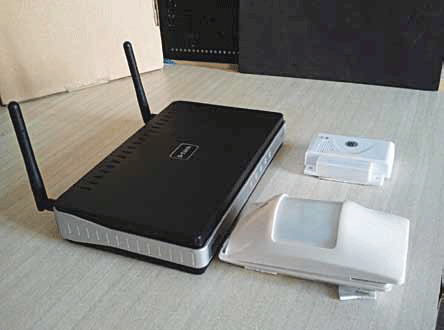
The wireless security hub by Maven Systems is a security solution for homes and small offices that can detect and report fire, gas leakage or intrusion. The alerts are almost real-time (within minutes of the detection), and the information reaches the owner, neighbours and security guards in the housing colony or workplace almost instantaneously.
Flashback
Suhas Jain, project manager, Maven Systems, says, “Safety and security is a must-have in today’s world. However, most of today’s systems require advanced planning to install such systems. This means existing houses need chiseling of walls for laying additional cables. Owners are looking for a solution which doesn’t require any new wiring, yet takes maximum advantage of their telecom and Internet connectivity.”
System components
The wireless security hub houses a host of components to communicate intrusions and other security parameters to the respective devices:
RF adaptor. The hub makes use of an adaptor that connects via USB to the Wi-Fi router. The adaptor now communicates with other radio frequency (RF) sensors used, viz, door sensor, motion sensor, smoke sensor and occupancy sensor. It houses Texas Instruments’ MSP430 microcontroller unit as well as the RF CC1101 chipset interfaced over serial peripheral interface (SPI) to the MSP430.
The RF adaptor communicates with the OpenWrt module router over a universal asynchronous receiver/ transmitter (UART). The data received from the RF module is used by the application in the OpenWrt router to send a notification to all the connected devices.
Door sensor. This sensor uses a TIMSP430 MCU and a CC1101 chipset. It sends messages to the router and to all connected devices in the area.
Motion sensor module. It uses a motion sensor incorporating TI’s CC1101 chipset. The wireless communication is done over sub-1GHz RF.
Working
The most distinguishing part of this product is that you don’t need a control panel at all. The product makes use of a Wi Fi access point as the burglar alarm panel. Wireless repeaters are provided to boost the range. Enduser touch points are smartphones like iPhone, BlackBerry and Android phones.
[stextbox id=”info” caption=”MSP430″]The MSP430 is a mixed-signal microcontroller family. Built around a 16- bit CPU, the MSP430 is designed for lowcost, specifically low-power-consuming, embedded applications.[/stextbox]
“Our product makes use of gadgets already present in the house. Existing smartphones are used for user interaction with the system. An existing Internet router/access point is used as the security panel. Battery life of offthe- shelf wireless sensors is enhanced by augmenting them with an RF board. Range is increased using RF repeaters and mesh network algorithms so as to suit even large, multi-storied buildings,” explains Jain.
“When leaving home, the owner puts the system in ‘arm’ mode, which basically activates the security features and enables all the sensors. In case any sensor detects an event (such as opening of the door, movement or breaking of glass), it waits for 30 seconds to allow the user to enter valid pin. If that does not happen, it sends a distress signal to the home owner, neighbours and the security guard(s) of the colony,” adds Dhananjay Kulkarni, project manager, Maven Systems.

How the system stands out
The product can integrate seamlessly into existing consumer product lines.
“As new smartphones get released, the end-user will automatically have better features. Depending on the security needs, the user can choose from hundreds of readily available sensors. Existing Internet connectivity (or later versions like 3G and 4G) will be used. In short, we have a system that does not lock the user in with limited proprietary options. Instead, we allow the user to pick any item from the consumer market and use it to build the system. This allows the user to leverage the huge number of lowcost options available in the consumer market space and build a customised solution,” explains Kulkarni.
[stextbox id=”info” caption=”CC1101″]The CC1101 is a high-sensitivity, lowpower, sub-1GHz RF transceiver designed for very low-power wireless applications. In addition, it provides extensive hardware support for packet handling, data buffering, burst transmissions, clear channel assessment, link-quality indication and wake-on radio.[/stextbox]
While the MSP430 chip consumes very little power, the CC1101 chipset has a 12dBm output which can cover an area of around three floors of 111 sq.m each. Hence most homes looking for a cheap yet effective system of security would benefit greatly from this product.
Challenges
From concept to field testing, the project took only about six months.
“Actually, it was all down to the huge experience of our team in the field along with our close interaction with silicon vendors. The only challenge during the project was battery life of the wireless sensors. With some clever algorithms, we have managed to almost double the standard life of two years,” informs Jain.
Explaining clever algorithms, Jain asserts, “We followed the smarter path. Instead of trying to reinvent the wheel, we made use of readymade, off-the-shelf components so we could leverage advantage of the volumes associated with mobile phones, Wi-Fi access points and sensors.”
Awards and recognition
“We received the first prize at Texas Instruments’ all-India MCU Design Contest 2012. Out of the 1200 entries, our product was considered to be the best and most innovative in design. We are also in the process of patenting some of the technologies used,” shares Kulkarni.







